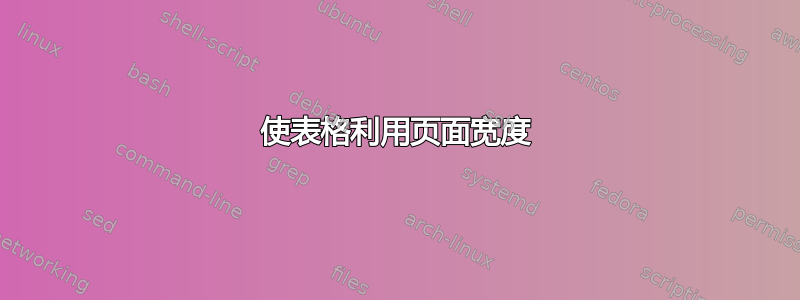
最小工作示例:
\documentclass[onecolumn]{article}
\usepackage{listings}
\title{F}
\begin{document}
\maketitle
\secion{foo}
\subsection{Interface (queries, stored procedures)}
\begin{tabular}{|l|}
\hline
create\_queue(OUT rv SMALLINT) \\
delete\_queue(\_queue\_id BIGINT, OUT status SMALLINT) \\
insert\_message(queue\_id BIGINT, source\_client\_id BIGINT, target\_client\_id BIGINT, rv TEXT, OUT status SMALLINT) \\
read\_top\_message(\_queue\_id BIGINT, client\_id BIGINT, OUT rv TEXT, OUT status SMALLINT) \\
delete\_top\_message(\_queue\_id BIGINT, client\_id BIGINT, OUT rv TEXT, OUT status SMALLINT) \\
queue\_exists(\_queue\_id BIGINT, OUT status SMALLINT) \\
get\_queues(OUT rv BIGINT) RETURNS SETOF BIGINT \\
epoche\_ms(OUT rv BIGINT) \\
get\_queues\_with\_pending\_messages(client\_id BIGINT, OUT rv BIGINT) RETURNS SETOF BIGINT \\
read\_message\_by\_sender(\_queue\_id BIGINT, \_client\_id BIGINT, \_source\_client\_id BIGINT, OUT rv TEXT, OUT status BIGINT) \\
delete\_message\_by\_sender(\_queue\_id BIGINT, \_client\_id BIGINT, \_source\_client\_id BIGINT, OUT rv TEXT, OUT status SMALLINT) \\
create\_client(\_clientId BIGINT, OUT status SMALLINT) \\
client\_exists(\_clientId BIGINT, OUT status SMALLINT) \\
get\_clients(OUT rv BIGINT) RETURNS SETOF BIGINT \\
create\_client(\_clientId BIGINT, OUT status SMALLINT) \\
\hline
\end{tabular}
\end{document}
输出(本质上): 如何让表格利用其左侧的空白空间?
如何让表格利用其左侧的空白空间?
注意:我搜索了解决方案并找到了相当多的解决方案 - 许多涉及表格* - 但不幸的是我无法让它们为我工作。
答案1
以下是您的选择
首先,使用p{\dimexpr\textwidth-2\tabcolsep-2\arrayrulewidth\relax}代替l列。
\documentclass[onecolumn]{article}
\usepackage{listings}
\title{F}
\begin{document}
\maketitle
\section{foo}
\subsection{Interface (queries, stored procedures)}
\noindent
\begin{tabular}{|p{\dimexpr\textwidth-2\tabcolsep-2\arrayrulewidth\relax}|}
\hline
create\_queue(OUT rv SMALLINT) \\
delete\_queue(\_queue\_id BIGINT, OUT status SMALLINT) \\
insert\_message(queue\_id BIGINT, source\_client\_id BIGINT, target\_client\_id BIGINT, rv TEXT, OUT status SMALLINT) \\
read\_top\_message(\_queue\_id BIGINT, client\_id BIGINT, OUT rv TEXT, OUT status SMALLINT) \\
delete\_top\_message(\_queue\_id BIGINT, client\_id BIGINT, OUT rv TEXT, OUT status SMALLINT) \\
queue\_exists(\_queue\_id BIGINT, OUT status SMALLINT) \\
get\_queues(OUT rv BIGINT) RETURNS SETOF BIGINT \\
epoche\_ms(OUT rv BIGINT) \\
get\_queues\_with\_pending\_messages(client\_id BIGINT, OUT rv BIGINT) RETURNS SETOF BIGINT \\
read\_message\_by\_sender(\_queue\_id BIGINT, \_client\_id BIGINT, \_source\_client\_id BIGINT, OUT rv TEXT, OUT status BIGINT) \\
delete\_message\_by\_sender(\_queue\_id BIGINT, \_client\_id BIGINT, \_source\_client\_id BIGINT, OUT rv TEXT, OUT status SMALLINT) \\
create\_client(\_clientId BIGINT, OUT status SMALLINT) \\
client\_exists(\_clientId BIGINT, OUT status SMALLINT) \\
get\_clients(OUT rv BIGINT) RETURNS SETOF BIGINT \\
create\_client(\_clientId BIGINT, OUT status SMALLINT) \\
\hline
\end{tabular}
\end{document}

二、使用tabularx
\documentclass[onecolumn]{article}
\usepackage{listings}
\usepackage{tabularx}
\title{F}
\begin{document}
\maketitle
\section{foo}
\subsection{Interface (queries, stored procedures)}
\noindent
\begin{tabularx}{\textwidth}{|X|}
\hline
create\_queue(OUT rv SMALLINT) \\
delete\_queue(\_queue\_id BIGINT, OUT status SMALLINT) \\
insert\_message(queue\_id BIGINT, source\_client\_id BIGINT, target\_client\_id BIGINT, rv TEXT, OUT status SMALLINT) \\
read\_top\_message(\_queue\_id BIGINT, client\_id BIGINT, OUT rv TEXT, OUT status SMALLINT) \\
delete\_top\_message(\_queue\_id BIGINT, client\_id BIGINT, OUT rv TEXT, OUT status SMALLINT) \\
queue\_exists(\_queue\_id BIGINT, OUT status SMALLINT) \\
get\_queues(OUT rv BIGINT) RETURNS SETOF BIGINT \\
epoche\_ms(OUT rv BIGINT) \\
get\_queues\_with\_pending\_messages(client\_id BIGINT, OUT rv BIGINT) RETURNS SETOF BIGINT \\
read\_message\_by\_sender(\_queue\_id BIGINT, \_client\_id BIGINT, \_source\_client\_id BIGINT, OUT rv TEXT, OUT status BIGINT) \\
delete\_message\_by\_sender(\_queue\_id BIGINT, \_client\_id BIGINT, \_source\_client\_id BIGINT, OUT rv TEXT, OUT status SMALLINT) \\
create\_client(\_clientId BIGINT, OUT status SMALLINT) \\
client\_exists(\_clientId BIGINT, OUT status SMALLINT) \\
get\_clients(OUT rv BIGINT) RETURNS SETOF BIGINT \\
create\_client(\_clientId BIGINT, OUT status SMALLINT) \\
\hline
\end{tabularx}
\end{document}
第三,如果您想坚持使用l列类型,请使用以下命令:
\documentclass[onecolumn]{article}
\usepackage{listings}
\title{F}
\begin{document}
\maketitle
\section{foo}
\subsection{Interface (queries, stored procedures)}
\noindent
\makebox[\textwidth][c]{%
\footnotesize
\begin{tabular}{|l|}
\hline
create\_queue(OUT rv SMALLINT) \\
delete\_queue(\_queue\_id BIGINT, OUT status SMALLINT) \\
insert\_message(queue\_id BIGINT, source\_client\_id BIGINT, target\_client\_id BIGINT, rv TEXT, OUT status SMALLINT) \\
read\_top\_message(\_queue\_id BIGINT, client\_id BIGINT, OUT rv TEXT, OUT status SMALLINT) \\
delete\_top\_message(\_queue\_id BIGINT, client\_id BIGINT, OUT rv TEXT, OUT status SMALLINT) \\
queue\_exists(\_queue\_id BIGINT, OUT status SMALLINT) \\
get\_queues(OUT rv BIGINT) RETURNS SETOF BIGINT \\
epoche\_ms(OUT rv BIGINT) \\
get\_queues\_with\_pending\_messages(client\_id BIGINT, OUT rv BIGINT) RETURNS SETOF BIGINT \\
read\_message\_by\_sender(\_queue\_id BIGINT, \_client\_id BIGINT, \_source\_client\_id BIGINT, OUT rv TEXT, OUT status BIGINT) \\
delete\_message\_by\_sender(\_queue\_id BIGINT, \_client\_id BIGINT, \_source\_client\_id BIGINT, OUT rv TEXT, OUT status SMALLINT) \\
create\_client(\_clientId BIGINT, OUT status SMALLINT) \\
client\_exists(\_clientId BIGINT, OUT status SMALLINT) \\
get\_clients(OUT rv BIGINT) RETURNS SETOF BIGINT \\
create\_client(\_clientId BIGINT, OUT status SMALLINT) \\
\hline
\end{tabular}
}
\end{document}

这里我使用了一个框\textwidth并将其居中。由于表格太宽,我还将文本大小缩小到了\footnotesize(一般来说人们不喜欢这样)。


